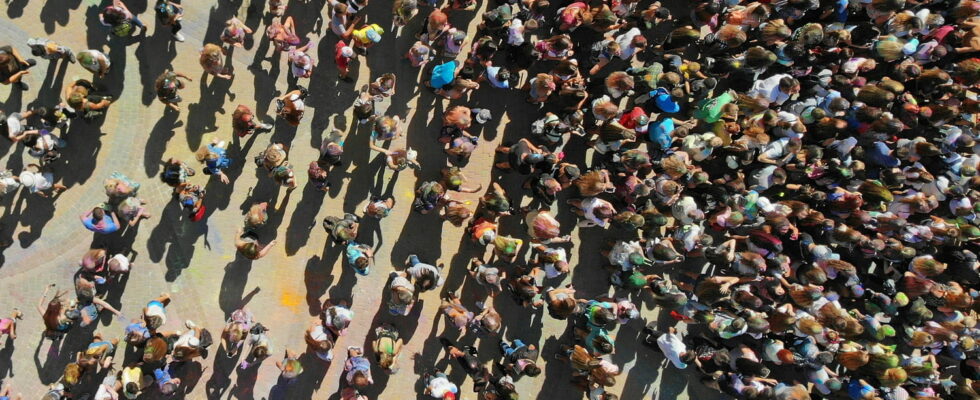If we brought together all the inhabitants of the planet in one place, they could all stand side by side on an incredibly small surface, corresponding to a French department or a large metropolis.
How many are we on earth today? According to estimates by demographic study institutes, the world’s population would rise in 2025 to around 8 billion inhabitants. An impressive number, which has continued to increase in recent decades: from some 2.5 billion in 1950, it increased to 4.4 billion in 1980, then to 6.1 billion in 2000 to reach 7, 8 billion in 2020.
And this population is very unevenly distributed the 197 countries on the planet, with regions are almost desert and overcrowded areas. Thus, Australia has nearly 23.5 million inhabitants in a territory of 7.6 million km2 while Tokyo, the most populous metropolis in the world, welcomes around 37 million inhabitants over an area of only 13 500 km2. And the same goes for other very big cities such as Delhi in India (33 million inhabitants) or Shanghai in China (30 million) which also display very high population densities.
Hence a question that may seem completely absurd: what surface would the world population occupy entirely if it was brought together in the same place? Not as in real life, in homes, with streets and green spaces, but standing, as in the metro or in a stadium. To find out, simply make a very simple calculation starting from the hypothesis that four people can stand up side by side on a surface of 1 m2. Nothing exceptional is the average density in the metro. And it is less than in certain events such as concerts, popular festivals or religious rallies! Especially since this hypothesis makes it possible to take into account the differences in corpulence, a child occupying less space than a slightly coated adult.
Thus, the 8 billion humans of the world’s population would occupy 8/4 or 2 billion square meters. Or, in a more suitable unit, 2,000 km2. This represents a 40 km rectangle over 50 km. In other words, a very small surface! To get an idea, it is the equivalent of the area of an average French department like the Yvelines, which is 2,310 km2. And it’s less than a city like Istanbul, Turkey, which is 2,576 km2!
Of course, this calculation does not correspond to any reality: it is difficult to imagine a crowd of 8 billion people stand up in a single place, even the time of a photo for the guinness book of records! But it allows us to represent the place that humanity physically occupies on our planet. Especially when we compare these 2,000 km2 to some 149 million km2 of emerged land.
